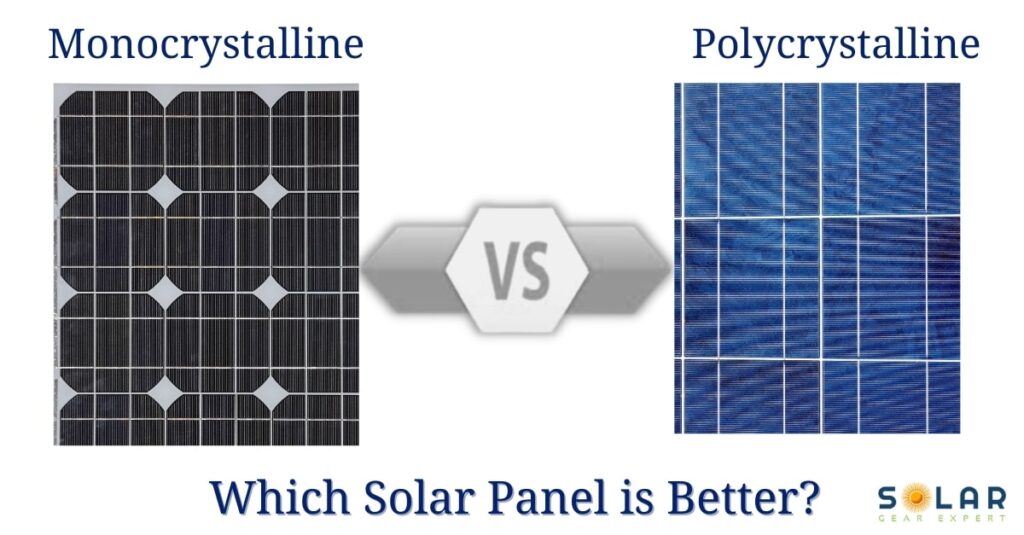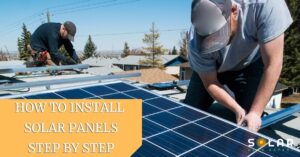
In the last decades, solar energy has grown to become one of the biggest and most effective kinds of renewable energy. Solar panels harvest the natural power of the sun to create electricity.
Solar panels also called PV panels, trap light energy from the sun. This light contains particles of energy called photons. The solar panels are able to convert these photons into electricity that you can use to power electrical loads, giving you a greener alternative to other forms of power.
If you are thinking of installing solar panels in your home or office you have come to the right place.
Stay with me as I take you through the various types of solar panels in the market today. I also show you how to install solar panels step by step to give you an idea of how the installation process looks like.
Types of Solar Panels
Solar panels have come a long way since they were first introduced. They are now much more advanced making them more efficient. They also look prettier on the roof of your house compared to before.
The main types of solar panels available in the market today are:
1. Monocrystalline Solar Panel
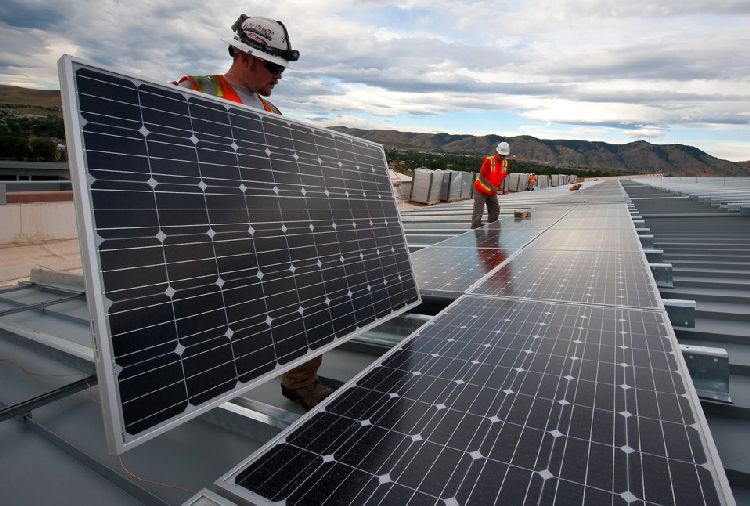
This type is the oldest and most developed. They are cut from a single pure crystal of silicon and appear black due to the interaction between sunlight and pure silicon.
2. Polycrystalline Solar Panel
These solar panels are a newer development in the market. Fragments of silicon are melted together in a mold then cut into wafers. Sunlight reflects on its crystals giving it a blue color.
3. Thin-film Solar Panel
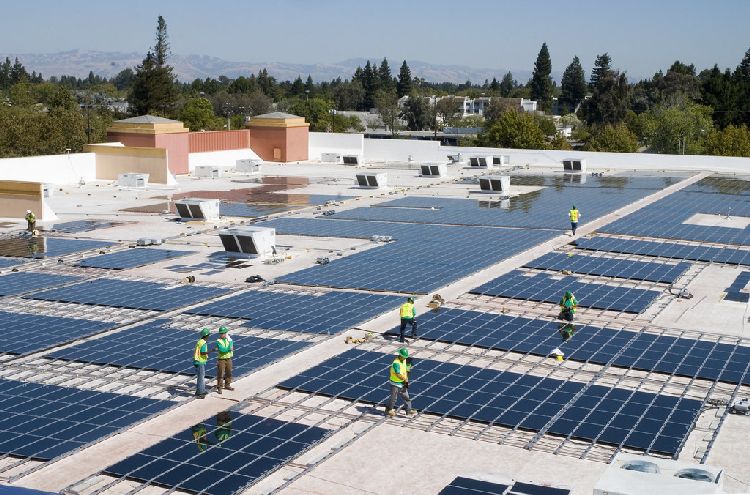
Image Credit: Flickr
Unlike monocrystalline and polycrystalline solar panels, thin-film panels can be made from other materials such as cadmium telluride and copper indium gallium selenide, and are cheaper and more flexible.
How to Install Solar Panels Step by Step
In order for your solar panels to reach their peak efficiency rate, the installation process must be done correctly. Before the installation, an MCS-certified installer has to carry out an assessment of your roof looking at basic safety factors including how strong the roof is, before approving the installation.
Things to Consider before Installing Solar Panels
There are a number of important safety issues that you need to take into consideration before installing solar panels. This is because solar panels involve a conversation of several hundred volts of electricity from the sunlight. It, therefore, goes without saying that the whole process needs to be handled by a certified professional after obtaining all necessary permits and meeting specific electrical standards.
1. Your Power Needs
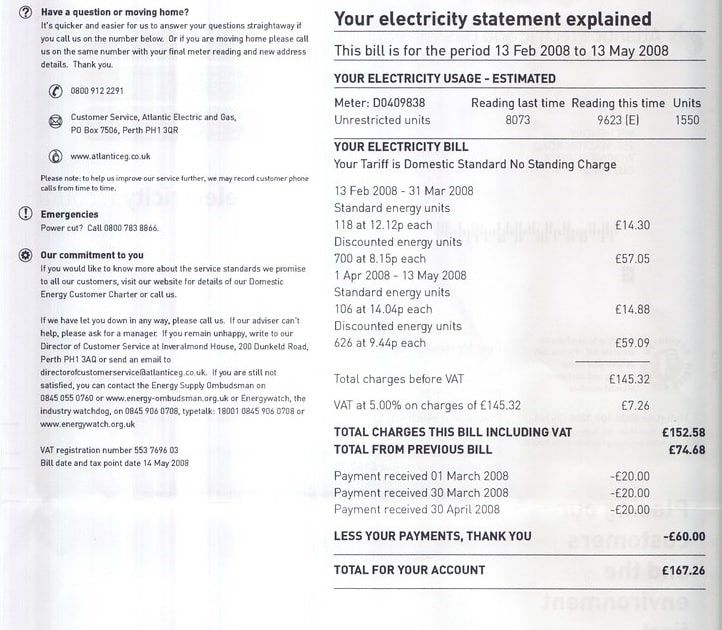
Image Credit: Flickr
Your power needs in terms of consumption based on the appliances you have will play a major role in the number and type of solar panels that you will need to install. To establish your power load, you need to study your electricity bills as well as statements for at least a year. This will guide you to determine how much solar energy needs to be produced to meet your power consumption.
To determine your daily average use, sum up your annual usage in terms of kWh and divide by 12. This gives you the average monthly usage. Then divide that by 30 to arrive at your daily average use.
2. Solar Panel Efficiency
Solar panel efficiency refers to the rate at which the panels are able to convert sunlight into electricity. Go for panels that have higher efficiency as it would mean you will require a fewer number of panels. With a more efficient solar panel, you will have a higher output thus able to charge your solar batteries faster. In addition, it will enable you to still get power even when the sunlight is not very bright. Average panel efficiency ranges between 15% to 20%. 20% plus being top of the line.
3. Roof Suitability
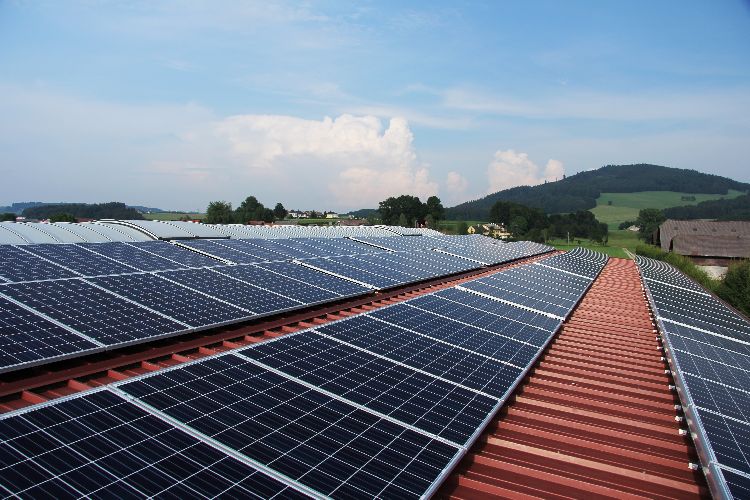
When you are considering installing solar panels on your roof, it is vital to take into consideration whether your roof will be strong enough to support the solar panel system that you want. Check to see that the entire solar array can fit in the available space as well. Although solar panels can be placed on all rooftops, the most ideal are flat roofs. Ensure that your roof can allow at least 30 cm of space all around the solar panels.
4. Size of Solar Panels
The bigger the size of the solar panel system the more electricity generated. Once you have calculated your power needs, you will be able to know what size of solar panels will work best for you. Based on the available space on the roof, this also will determine what size of solar panels you can buy. You can use this solar panel sizing calculator to determine how many panels will be needed on your roof.
5. Maintenance
Ensure to go for a solar panel that is easy for you to operate and maintain. Good maintenance helps maximize the lifespan of your solar panel system. Have your panels regularly checked by a certified service provider. Apart from seeking maintenance assistance from the installer, you can as well take part in the process by removing branches and leaves from your solar panels, rinsing them with water using a garden hose pipe but avoid touching the panels.
6. Solar Panel Durability
The average lifespan of a quality solar panel is between 20 to 25 years. A durable panel saves you the hustle of doing replacements all the time. Go for a solar panel that has proven impressive durability against environmental conditions. Going through product reviews from consumers who have used the solar panel type before you, helps to guide you towards the right choice.
7. Location and Direction

Solar panels should be placed on a roof that faces the direction from which the sun rises for maximum exposure. Ensure that the roof does not have any shade from obstacles such as tall buildings and trees. These may interfere with the amount of sunlight that actually reaches your solar panels. For good output, your panels should be able to capture the maximum amount of sunlight. Therefore, expose your solar panels to the sunlight for as long as possible.
8. Warranty
Go for solar panels that come with a longer warranty period. Settle for panels with performance warranties as this is a promise by the manufacturer of above-average performance. With such a warranty, the panel will be deemed defective if it falls below the set level. Most manufacturers in the solar panel industry today put it at least 80% rated efficiency. Solar panels come with 25 to 30 years of performance warranty periods.
Installing Solar Panels in 7 Steps
Solar panels generate electricity for home and commercial use. Either way, these panels are usually installed on the rooftop so as to get the maximum possible sunlight to generate as much electricity from the system as possible.
The following are the 7 steps involved in the installation process:
Step-1: Mount Installation
Begin by fixing the mounts which will support the solar panels, depending on your requirement. There are different types of mounts, including roof-ground and flush mounts. They both work well to provide a base structure that gives good support. When fixing the mounts, consider the direction in which the panels will be installed. Ultimately, the panels should face the direction in which there is maximum sunlight. Slightly tilt the mounting structure at an angle between 18 to 36 degrees.
Step-2: Install the Panels
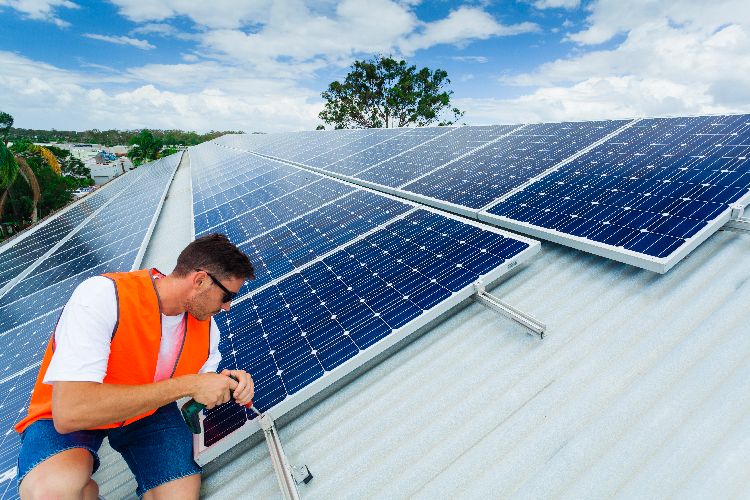
The next step entails fixing the solar panels with the mounting structure. Fix the panels by tightening the nuts and bolts firmly. Make sure the whole structure is sturdy.
Step-3: Wiring
The next step is to do the electrical wiring. Using junction connectors or a fuse combiner box, wire the solar modules together. Use insulated cables. This helps to avoid leakages that may lead to accidents. Connect the exterior wiring with the interior panels. This connection allows the flow of energy to a charger controller then to a battery bank for storage. This step in the installation process is crucial and thus should be carried out by a qualified professional so as to avert injury or damage to your solar system. During the wiring process, panels can be connected with each other in form of two types of series;
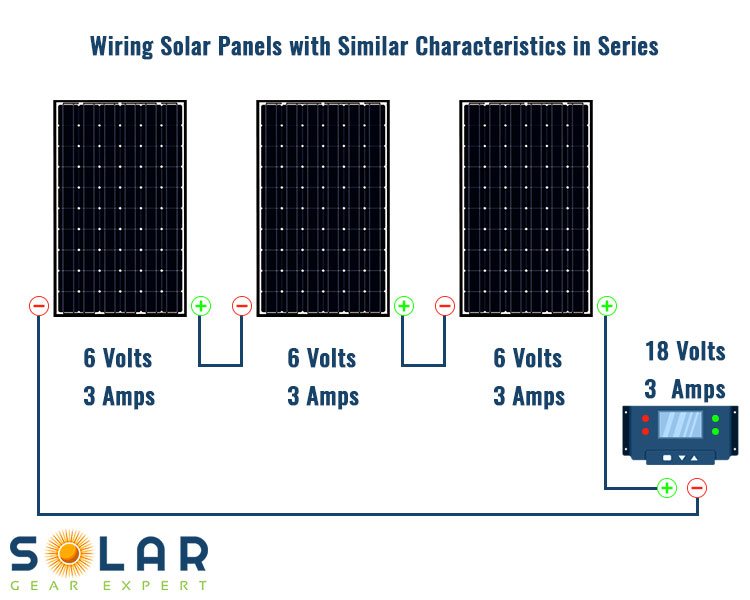
The series connection where the positive wire of one panel is connected to the negative wire of another module. The good thing with this type of wiring is that it increases the voltage match with your battery bank.
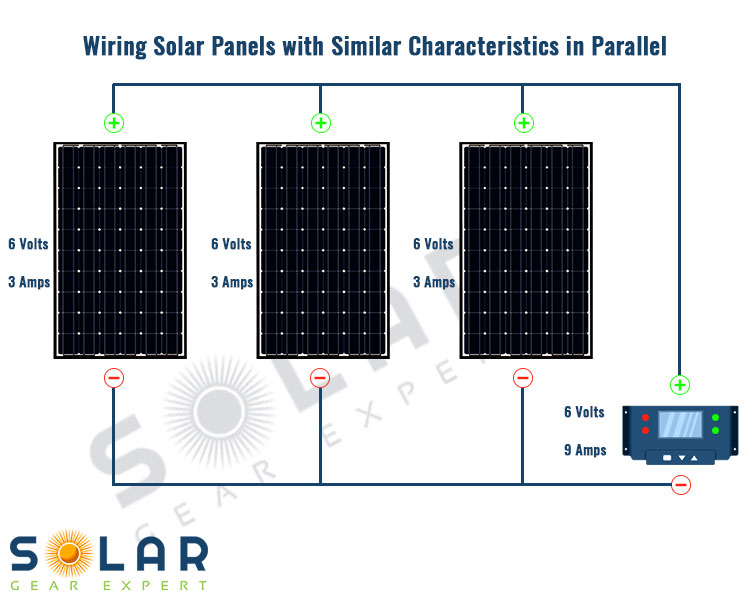
Another option of wiring is the parallel connection. Here you connect positive to positive and negative to negative. With it, the wiring voltage of each panel then remains the same.
Here is a detailed guide on how to wire solar panels.
Step-4: Connection of Solar Inverter
Next is for you to connect your system to a solar inverter using the parallel connection series. To produce electricity, connect the solar inverter to the solar battery and grid input.
If you want to learn more about solar inverters, check out our article on SolarEdge vs Enphase.
Step-5: Connecting Solar Inverter and Solar Battery
Connect the positive terminal of the battery to the positive terminal of the inverter and the negative to negative. The battery is used to store electricity in an off-grid system.
Step-6: Connecting the Solar Inverter to the Grid
The next step is to connect the inverter to the grid. Using a normal plug, connect to your main power switch.
Step: 7: Start Solar Inverter
The last step is to carry out a test run to ensure that everything is working correctly. Once you have confirmed all is well, you can start the inverter switch. Put on the inverter switch on the main switch of your home and start reaping the benefits of installing solar panels.
Benefits of Installing Solar Panels
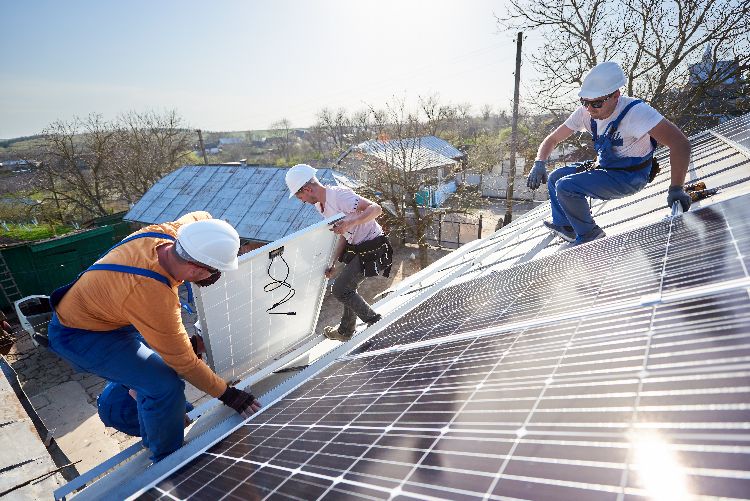
There are several reasons why using a solar power system is a wise decision. These include:
- It is sustainable. As long as you live in an area where there is sunlight, then you are assured of electricity supply all year round, even during cloudy days.
- Environmentally friendly. Solar panels do not produce any pollutants thus is a form of clean energy that can power your home or business. It does not give any carbon emission like other energy sources. Solar panels thus prevent the release of any gases that may be harmful to both the environment and public health.
- Saves you cash. With a solar energy system, the electricity that you produce is totally free. This lowers your energy bills and in the long run, saves you money.
- Easy process. Apart from meeting a few simple set rules, installing solar panels generally does not require special permission. This makes it a seamless process with great returns making it worthwhile in the end.
- Renewable energy. Solar panels can produce energy all year round making them an efficient and reliable source of energy. Solar energy can be harnessed in all areas of the world, unlike some of the other sources of energy. Electricity is produced even during cloudy days.
- Versatile installation. Solar panels can be installed almost anywhere. It can be done in both small and large-scale settings depending on the needs. With it comes the possibility of providing electricity in remote locations.
- Gives returns on investment. You can also make money from any extra energy that you generate. Through the Smart Export Guarantee, you can receive payments for any surplus energy exported back to the grid.
- Low maintenance costs. Solar panels generally do not require a lot of maintenance. Cleaning them only a couple of times per year is sufficient to have them serve you efficiently. Additionally, solar panels do not have moveable parts thus there is no wear and tear.
- Economic impact. The solar panel installation process promotes local job creation. This is true as most of the costs of the system come from the installation of the panels themselves. This has a positive impact on the economy in that area.
| # | Preview | Product | Rating | Price | |
|---|---|---|---|---|---|
| 1 |
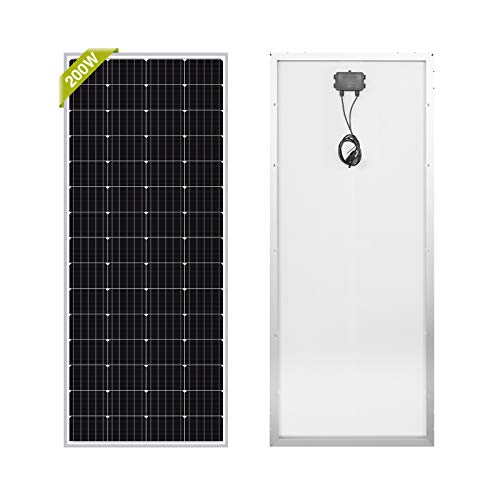
|
Newpowa 200W Monocrystalline 200 Watts 12V Solar Panel High Efficiency Mono PV Module Power for RV... | 430 Reviews | $197.50 | Check Price on Amazon |
| 2 |

|
Renogy 2PCS 100 Watt Solar Panels 12 Volt Monocrystalline, High-Efficiency Module PV Power Charger... | 2,815 Reviews | $228.99 | Check Price on Amazon |
| 3 |

|
Renogy 200 Watt 12 Volt Monocrystalline Starter w/ 40A Rover MPPT Charge Controller Connectors +Tray... | 1,177 Reviews | $514.99 $331.98 | Check Price on Amazon |
| 4 |

|
BLUETTI SP200 200w Solar Panel for AC200P/EB70/AC50S/EB150/EB240 Power Station,Portable Foldable... | 164 Reviews | $599.00 $499.99 | Check Price on Amazon |
| 5 |

|
HQST 100 Watt 12V Monocrystalline Solar Panel with Solar Connectors, High Efficiency Module PV Power... | 325 Reviews | $87.99 | Check Price on Amazon |
FAQs
Q1: Will Solar Panel Installation Increase my Home Property Value?
A1: The general answer is yes! However, this value varies between each installation and the property. In the U.S. recent studies show an average increase in home property value in the range of between $4,020 and $5,911 for each 1 kilowatt of solar panels installed. Typically, the selling price of a solar home is 3.5 % or higher as compared to homes without solar.
Q2: Will Installing Solar Panels Damage My Roof?
A2: No. Especially when the installation is done by a certified professional and the roof is in good condition. However, where the installation is done on a poorly conditioned roof, there could be damage that may result in leakage in your roof.
Q3: How much does it Cost to Install Solar Panels on a Roof?
A3: In the United States, the average cost of installing solar panels is about $12,000 after federal tax incentives. A low-end smaller system may cost you around $5,000 while a high-priced solar panel system can cost $40,000 or more.
Q4: What type of Roof is Best for Solar Panels?
A4: Asphalt shingles are the best roof for solar panels. They are relatively light and easy to install sheets. They allow sturdy installation of solar panels.
Q5: How long will it take for Solar Panels to pay for Themselves?
A5: Installing solar panels greatly reduces the amount of money you would have spent on your utility bill. Consequently, as a result, your savings increases and thus can take anywhere from seven to 20 years for you to cover the initial cost of installing the solar panels. This period is calculated by taking the total cost used to install the system less any solar incentives and/or rebates, as well as your monthly utility bill saving up until the total cost has been paid off in full.
Q6: How much will I Save on my Electricity Bills Annually?
A6: Solar savings are real although the exact amount that you save through reduced electricity bills depends on the availability of state incentives. Over the lifetime of your solar panel system, the average home saves between $10,000 and $30,000. An average 6 kW solar system saves you about $1,500 of otherwise electricity bill annually.
Wrapping Up
Solar panels are an effective way to offset electricity bills, particularly in homes. Installing solar panels should not be done in a rush. The process should preferably be undertaken by a certified professional; however, you still need to learn the process.
This how to install solar panels step by step guide will help you make certain decisions along the way. Since electricity is involved, this is crucial to avoid any accidents or damages.
Although the initial installation cost may be high, solar panels are a long-time investment that will end up saving you money in the long run.
And don’t you worry about finding solar-powered appliances; nearly every big brand has a variety of solar appliances.
Last update on 2021-11-23 at 23:14 / Affiliate links / Images from Amazon Product Advertising API

